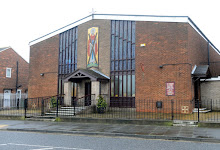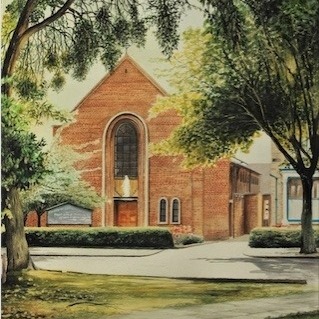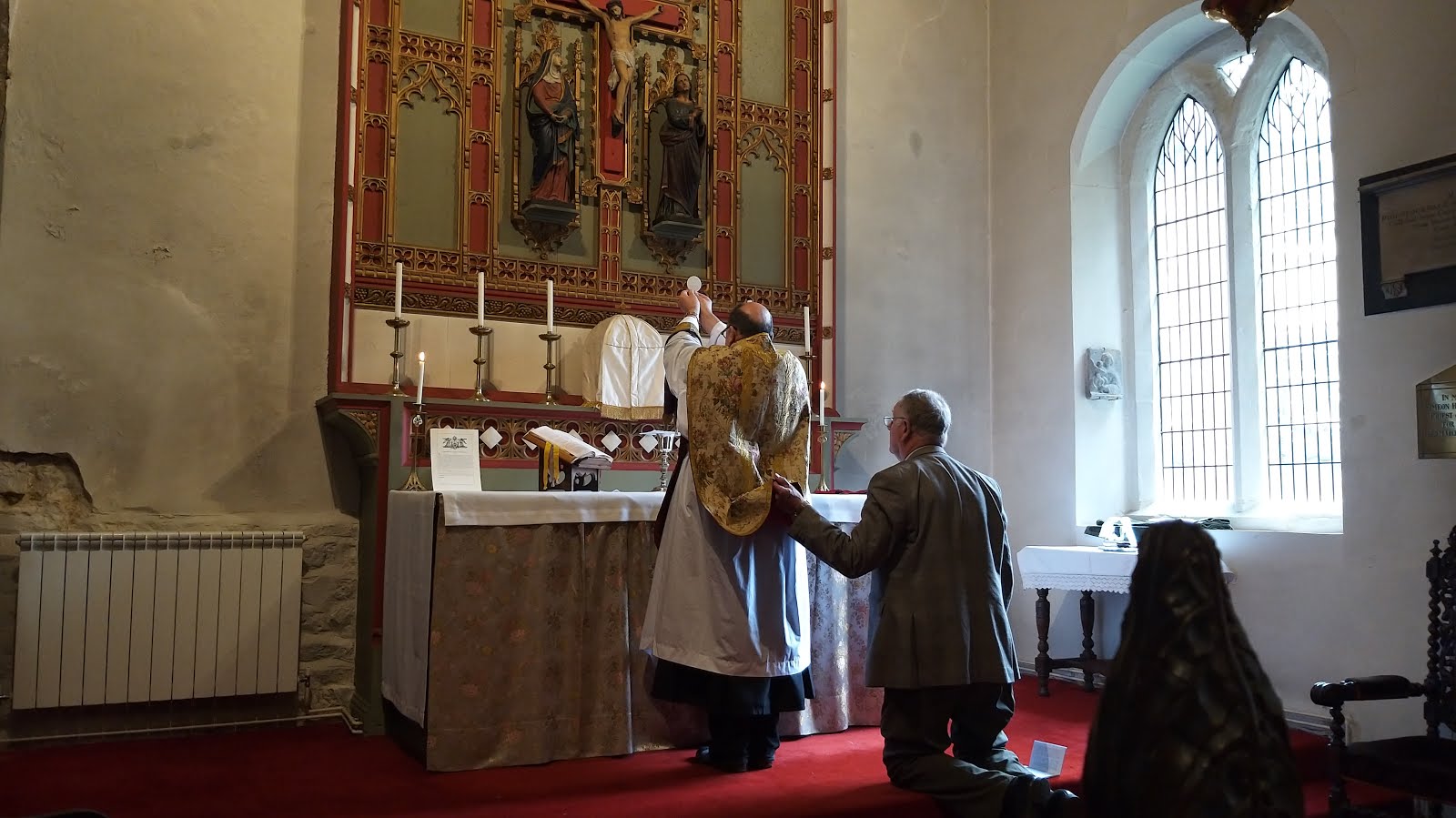Although it drizzled on and off during the six hour wait for the Mass of Beatification, the time seemed to pass very quickly. From around 7am, things began to happen, with the two massed choirs (one of schoolchildren and the other of adults) rehearsing various parts of the Mass. Soon after 8am there was a truly dreadful ecumenical service which was broadcast on BBC Radio 4. The less said about that the better.
From 9am helicopters were flying overhead, which many people mistakenly took as the arrival of the Holy Father. In fact, I think they were carrying camera crews for the television coverage. After several passes, and dashed expectations, it was a great surprise to see the screens showing a landed helicopter with His Holiness emerging over a red carpet. The crowd went wild with cheering and flag waving. It turned out that the landing site was some distance away, because the screens showed the Holy Father being driven by car through residential areas.
On arrival at the site there was the usual hand shaking with mayors and other dignitaries before the Pope climbed into the popemobile for a quick traverse of the site. Again the crowd went wild, especially when babies were presented for blessing and kissing.
The Beatification Mass was novus ordo with the preface and canon in Latin. The kyrie was a version of the orbis factor kyrie and Credo III was sung. The Gloria, Sanctus and Agnus Dei were in English and taken from James Macmillan's Mass, specially composed for the beatification. The choirs sang very well, considering that they had only come together a few hours before. I was a little disappointed with the selection of music. To my mind, Macmillan's Mass was not as wonderful as many had made out, and I suppose it was inevitable that some Taize chant would have been included. However Elgar's Ave Verum was much welcomed, as were other motets; and Praise to the Holiest was sung with great gusto.
I was very heartened to see how well the altar servers had been trained and how well they presented themselves. I could not say the same for all the numerous concelebrants, many of whom seemed not to have their attention fully focused on the actions on the sanctuary. Despite one or two criticisms, it must be said that the Mass was a wonderful experience, and credit for this largely rests with Mgr Marini who has the ability to control things whilst hardly being noticed.
At the end of Mass, and before the final blessing, the Holy Father delivered his Angelus address, normally given in St Peter's Square. Then the Angelus was recited in Latin. After a final hymn, an English version of the Te Deum was sung to a setting by Haydn. I would have much preferred it in Latin and plainchant.
The actual beatification ceremony was early in the Mass, just after the kyrie. It took the form of Archbishop Longley presenting the cause to the Holy Father, and the Holy Father giving his assent and declaring that the feast day would be 9th October. Then the relics of Cardinal Newman were presented to the Holy Father. Later Beatus Joannus Hinricus was invoked in the canon of the Mass.
After Mass, Pope Benedict was immediately taken to his next engagement. In the two hours that remained before our coach was due to depart, I walked through the crowd in the hope of spotting people I knew; and then purchased a sweatshirt as a memento of the occasion. We arrived back in Selby at 5.15, which was just nice time to get to York for Mass at 6.30.
The thing that impressed me most was the behaviour of the 50,000 or so people in the crowd. Before and during the Pope's arrival, the atmosphere was electric with wild shouting and cheering. As soon as Mass began, there was perfect silence. This is despite the congregation including mothers with babies, young families, youth groups and pensioners. It is a measure of the power of the Holy Father's presence, that he can engender such euphoria one moment and such prayerful attention the next. I doubt whether there is another man living who could do the same.
GOD BLESS OUR POPE































